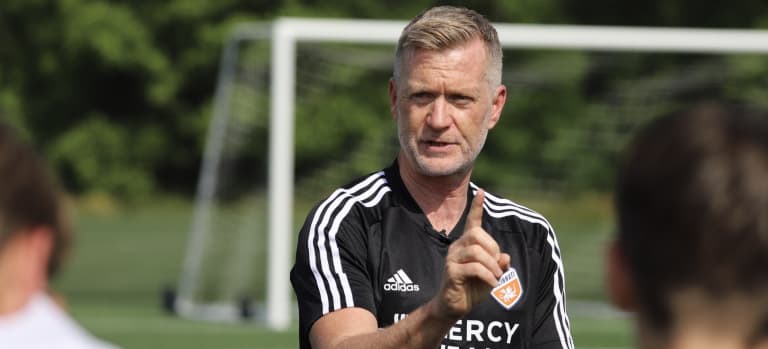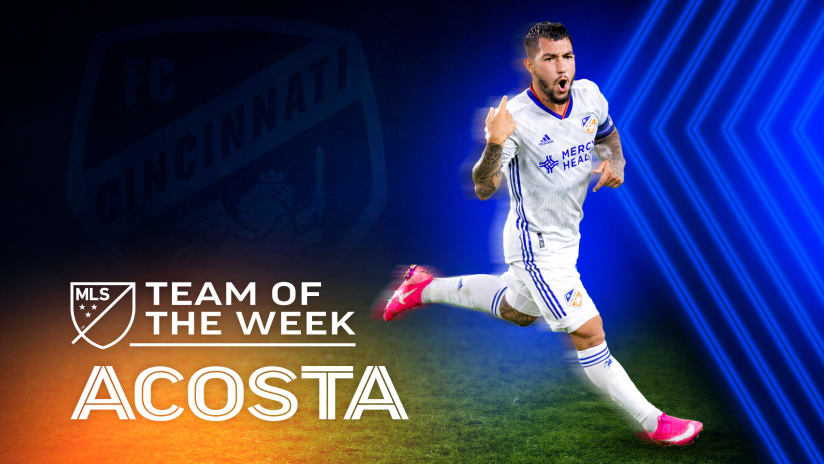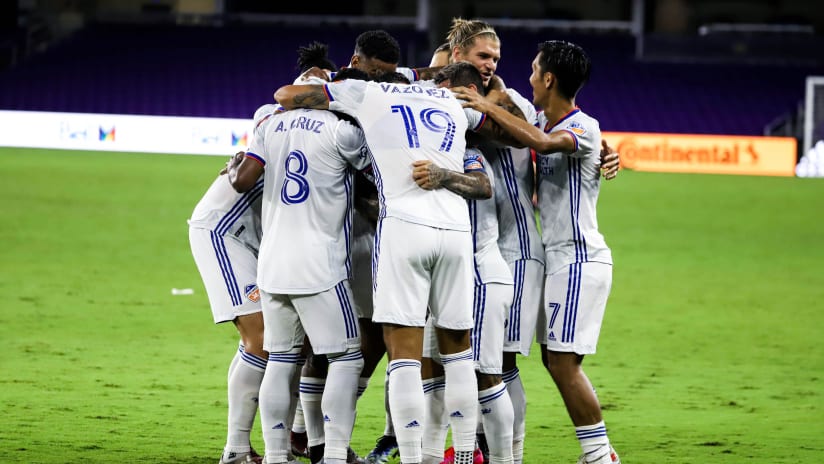As the FC Cincinnati Academy inches closer to the start of its inaugural season later this summer, Larry Sunderland, FCC’s Director of Player Development, was is charged with overseeing the future of the Orange and Blue. In a recent sit-down interview, he spoke about the Academy’s place in the Greater Cincinnati youth soccer scene.
This was the second part of an interview with Sunderland. The first one is available here.
Charlie Hatch: Where does the FC Cincinnati Academy fit among the existing boy’s soccer clubs in Greater Cincinnati?
Larry Sunderland: I look at the Academy as another layer. If you think about the development pathway being a pyramid that starts at the low ages levels and skill levels, you’re trying to develop and push the top talent to the top of the pyramid. We’re just another layer that’s closer to the top of that pyramid. The FCC first-team would be the top layer in our region, while the U.S. National Team would be the top layer at a national level.
CH: So, in being closer to the top, what can you do work with others in the pyramid in ways to interact, communicate and collaborate?
LS: I think it’s critically important that we’re really inclusive with everything that we do. If we are working with the “elite youth soccer players” in market to move them through to the FC Cincinnati first team, then it’s critically important for us to help develop the infrastructure below our place in the pyramid. We do that by forming relationships with the clubs and the individuals who run those clubs. We can work on curriculums together and we can work on identification together. Really, it’s the idea of sharing knowledge and that’s a two-way share. I want to share knowledge between FC Cincinnati and local youth clubs.
CH: What’s critical that people in the Cincinnati youth soccer community understand?
LS: It’s really critical that the local soccer market understands that their role is so, so important to everything we do. We want to help grow that infrastructure and grow the quality of the education to grow the quality of players that are coming through the pyramid. The bottom half of the pyramid is as important as the top because without a good bottom half, the top half is weak. It’s really important that we all work together.

CH: Having an MLS club in Cincinnati helps, but does having the Academy also raise the level of soccer in this area?
LS: Absolutely. I’d like to think that all the young soccer players that are in our market are aspiring to one day be FC Cincinnati first-team players. This presents a true pathway for them. The better we can link all the levels of that pyramid and pathway together, the more opportunities we have for players in the market.
CH: Shifting the focus to academies in MLS, how does the FCC Academy fall in line similar to other league academies? Because it’s new here in Cincinnati, it’s a new concept grasp for many of our supporters.
LS: We’re a first-year Academy, so comparison always has to be in relation to where we are in the process. So, we’re early to the process. But we also have the benefit of the experience of other academies and people who’ve been with those academies in MLS. That helps and accelerates our process exponentially. While are a start-up, I think we’re going to make up ground really quickly here.
CH: With the FC Cincinnati Academy, how does it align with what will be the present and future of developing players for American soccer and potentially to sell for the rest of the world?
LS: When you look the business side of soccer, the global marketplace for soccer is just shrinking. The connections around the world are so close now and the intelligence that the decision makers and clubs around the world have, it’s just so much greater. The accessibility to that intelligence is right here.
Where does MLS fit into that global marketplace? Well, I think we’re getting a bigger chunk of it basically by the day. People are recognizing that MLS as a league is much stronger than they maybe perceived a few years ago, and they’re figuring that out pretty quickly, too. Also, they’re figuring out that we’re developing players and there’s a greater player pool in the U.S. We’re developing players and rapidly improving how we develop players through MLS academies.
I think the global marketplace is shrinking and there are a lot of eyes on MLS and MLS players.
CH: (FCC General Manager Gerard Nijkamp) mentioned trying to build a foundation for FC Cincinnati, and he mentioned your name a lot for putting it together. How important is it for people at the top of the organization to value the Academy similar as they do the first team?
LS: We’ve spoken before about the idea of the institution. The Academy is a very important place not just for the idea of developing players and moving them through the system, but also the idea of connection to the community. It becomes a starting point FC Cincinnati and a place where people identify with the culture of the Academy. That’s critically, critically important.
The idea of my role within the Academy and helping build that foundation, it’s important to me that the foundation is linked to everything else we’re doing in the organization. That’s not just on the soccer side, but the entire organization. The idea of this culture being one organization and one club is really important. I think this club is pretty unique in its connection throughout the entire organization.

CH: PEC Zwolle just sold (Sepp van den Burg) a 17-year-old to Liverpool. For FC Cincinnati fans, that’s a prime example of what your work with an academy is trying to do. Is this a way for fans to identify with something you’re trying to do? Is this a sign for the future?
LS: When you’re talking about player development, you’re always thinking about the future. I’m always trying to look at players and not judging a player based on where they are now. I’m trying to foresee what a player might be down the line. The overall perspective on how you look at an academy is a long-term process.
The player at Zwolle didn’t just happen overnight. The process of developing a player there to be sold to a club like Liverpool, that entire process didn’t just happen overnight. They’ve been doing that for many, many years. So, I think the way you look at the Academy and the development of players is similar. It’s a long-team process. Hopefully we get in a position one day where we’re trying to make some decisions of do we sell a player on or not? I mean, those are good decisions to make. Hopefully we get to that.
CH: With FCC Academy training starting later this month, how nice will it be to see the players on the field rather than all the hypotheticals and building to this moment?
LS: It’s always great to put the ball on the field and get it rolling around and see the guys enjoying themselves. That’ll be the idea of the first two weeks, just to get them out, let them have fun, see the facility and get inspired about the start of the season. This is the start and beginning of building relationships.



